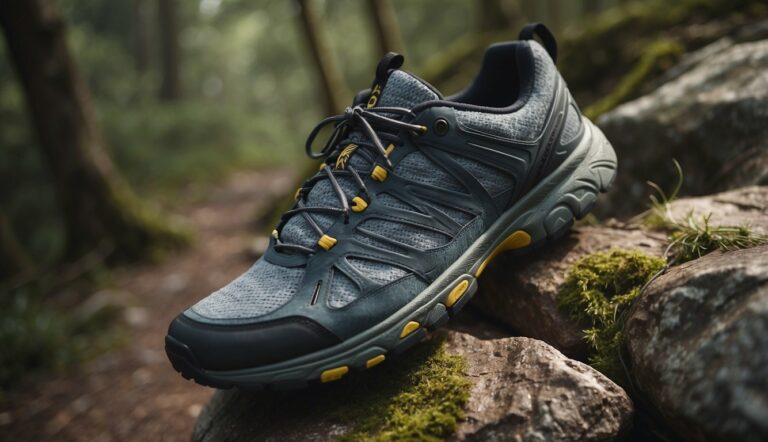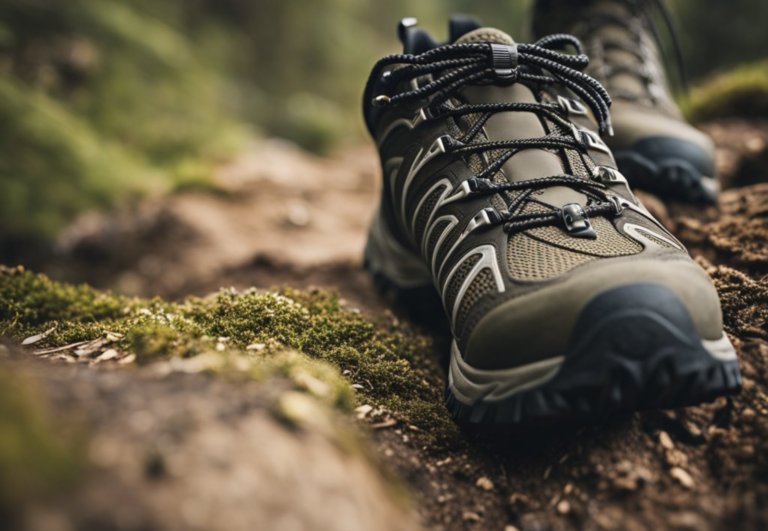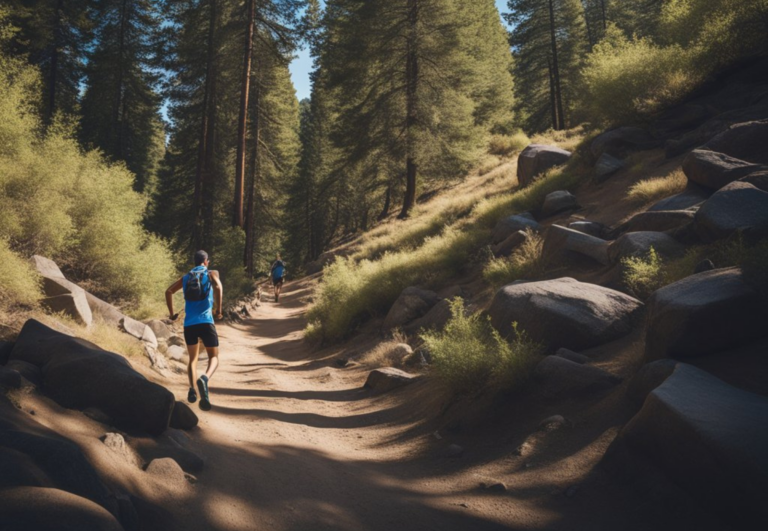Dealing with Isolation During Solo Trail Runs: Strategies for Mental Resilience
Solo trail running is an activity that offers a unique sense of freedom and the opportunity to connect with nature. It can be incredibly rewarding, but it does come with challenges, particularly the feeling of isolation. As a UESCA certified running coach, I understand the importance of preparing mentally and emotionally for long periods alone on the trail. Confidence and self-awareness are key to not only enjoying the solitary experience but also ensuring safety and a positive mental state throughout the run.
Building confidence begins with thorough preparation. Before hitting the trail, I always ensure I am familiar with the route and have the necessary gear. Being well-prepared can mitigate feelings of anxiety and help maintain focus. On the trail, maintaining awareness is crucial; not only does it keep you safe, but it also makes the experience more engaging. By being present and observant of your surroundings, the sense of isolation can transform into an empowering journey of self-reliance.
Preparing for Solo Trail Runs
When heading out for a solo trail run, my preparation process is meticulous and grounded in safety. Adequate gear, a well-thought-out route, and awareness of weather and terrain conditions are fundamental.
Selecting Proper Gear
I always ensure I have the essential gear tailored to both my needs and the environment. A well-stocked hydration pack is non-negotiable for maintaining fluids over long distances. I carry a GPS device or compass for navigation and a fully charged mobile phone for emergencies. Below is a checklist of gear I select:
- Hydration: Minimum 1.5L water bladder or bottles
- GPS/Compass: Reliable for unmarked trails
- Safety Items: Whistle, headlamp, first-aid kit
- Footwear: Trail running shoes with a good grip
Planning the Route
Charting the route ahead of time provides a framework for my run. I inform someone of my planned trail and expected return time for safety precautions. A physical map or a saved route on my GPS device guides me in areas with no cell service. I also check previous runner reviews for insightful information on the trail’s condition and any challenges I might face.

Checking Weather and Terrain
Before lacing up my shoes, I review the weather forecast and terrain. This step is crucial to determine appropriate attire and whether additional gear, like gaiters for mud or a rain jacket, may be necessary. Here’s a quick reference for my pre-run checks:
- Weather: Temperature, precipitation, wind, and alerts
- Terrain: Elevation gain, surface type, and technical difficulties
By paying careful attention to these aspects of preparation, I set the stage for a safe and satisfying experience on the trails.
Navigational Skills and Tools for Trail Runners
When embarking on solo trail runs, mastering navigational skills and having reliable tools are imperative. I emphasize that accurate navigation can ensure safety and enhance the running experience by keeping you on the right path.
Understanding and Using Maps
Navigating trails successfully starts with a thorough understanding of maps. Always carry a detailed topographic map of your route. These maps indicate terrain features, elevations, and trails, which are crucial for understanding your surroundings. To use a map effectively:
- Identify Landmarks: Find clear landmarks on your map and match them to what you see in the environment.
- Plan Your Route: Trace your intended path on the map and note key features to watch for.
- Stay Oriented: Regularly check your map to ensure you haven’t strayed from your planned route.
GPS and Compass Fundamentals
While technology such as GPS devices enhances navigation on trails, having a compass as a backup is a fundamental skill. Here’s how to use these tools:
- GPS Device: Ensure it’s fully charged; carry an external battery if necessary. Familiarize yourself with its features before hitting the trail. Remember, batteries can fail, especially in cold conditions.
Compass Use: Your compass is your fail-safe tool. Learn to read it properly:
- Align the Needle: Match the compass needle to the map’s north.
- Set Bearings: Translate your route from the map onto the landscape with compass bearings.
- Triangulation: Use a compass to pinpoint your location by taking bearings from known landmarks.
By honing your map reading skills and understanding how to use a GPS device and compass, you can navigate trails with confidence, ensuring that isolation does not turn into disorientation.
Safety and Dealing with Emergencies

Running solo on trails can be immensely rewarding, but it’s vital to be prepared for wildlife encounters and know how to handle potential injuries. My extensive experience and training help me guide you through these challenges confidently.
Wildlife and Environmental Hazards
I always emphasize the importance of awareness on the trails. You could encounter wildlife, so research the area’s fauna beforehand. Here are safety tips for wildlife encounters:
- Make Noise: Avoid surprising animals by making noise or wearing a bell.
- Carry Bear Spray: If you’re in bear country, bear spray can be a lifesaver.
For environmental hazards like falls, the right gear is crucial:
- Wear proper trail running shoes with good grip.
- Use a trekking pole for stability on uneven terrain.
Handling Injuries and Emergencies
Despite precautions, injuries may occur. Here’s how to handle these situations:
- Carry a Basic First-Aid Kit: Include bandages, antiseptic, and a splint.
- Know Emergency Contacts: Have local emergency services numbers saved in your phone.
In case of severe injuries or if you get lost:
- Stay calm and use a whistle or flare to signal for help.
- If you have cell service, contact emergency services immediately.
Lastly, falls can happen. To mitigate risk:
- When fatigued, slow down and focus on your footing.
- If you fall, assess your injury before moving. If you can’t walk, signal for help.
Mental Well-being on the Trail

On solo trail runs, maintaining mental well-being is as crucial as physical health. I’m going to share strategies for managing isolation and embracing the solitude of the trail, drawing from my experience and knowledge as a UESCA certified running coach.
Managing Isolation and Anxiety
When facing the vastness of nature alone, it’s common to feel a mix of isolation and anxiety. These emotions can be heightened by the absence of familiar social cues and the presence of unfamiliar territory. To overcome these feelings, journaling can be a potent tool. By regularly documenting your experiences and emotions, you give yourself a chance to reflect and process your journey. Here’s a simple framework to organize your journaling:
- Date/Time: Keep track of when you feel anxious.
- Situation: Describe what triggered your emotions.
- Emotion/Thoughts: Express how you’re feeling and what you’re thinking.
- Coping Strategies: Note what helps you calm down and refocus.
Deep breathing exercises also help quell anxiety. Inhale slowly for a count of four, hold for a count of seven, and exhale for a count of eight. This practice can center your thoughts and lower anxiety levels.
Mindfulness and Enjoying Solitude
Mindfulness on the trail means being fully present with your surroundings, which can transform feelings of isolation into moments of growth and appreciation. Here are steps to practice mindfulness:
- Observe the details in nature around you—the texture of tree bark, the sound of leaves rustling, the coolness of the breeze.
- Acknowledge your fears or any discomfort, recognizing them as mere passersby in your mind.
- Ground yourself in the moment by feeling your feet on the path or by focusing on your breath.
By turning your attention to the environment, you appreciate the uniqueness of your solo adventure. It’s a chance for personal growth and for cultivating a peaceful state of mind, detached from the daily digital noise and societal expectations. Embracing solitude becomes not just a byproduct of solo trail running, but an enriching experience.
Engaging with the Trail Running Community

Engaging with the trail running community can enrich your solo outings. As an experienced runner and coach, I find that connection is key to a fulfilling trail running practice. Social media platforms can be invaluable for connecting with fellow runners. Facebook groups, Instagram hashtags, and Twitter threads serve as meeting points.
When joining trail running groups on social media, here’s what to look for:
- Local or regional trail running groups
- Event announcements for group runs or races
- Shared tips on gear and navigation
- Opportunities for volunteering at events
Connecting with these groups offers insights and support for both new and seasoned trail runners. Sharing your experiences and questions in these spaces can foster a sense of belonging. Engaging with these communities also allows for:
- Learning from others’ experiences
- Discovering new trails that have been vetted by seasoned runners
- In-person meetups to share the joy of running
Lastly, respect the rules of any online community you join; this includes being supportive and staying on topic. Devote time to these communities, and you’ll benefit from both the physical and social aspects of trail running.
After the Run: Reflection and Recovery
After completing a solo trail run, the focus should shift from endurance to wellness, emphasizing physical assessment and personal growth. This is a vital step to ensure continued comfort and performance in future runs.
Assessing Physical Condition
Post-run, I always recommend runners to evaluate their physical state. This includes noting any discomfort or pain and comparing it to baseline comfort levels. Here’s how I approach it:
- Muscle Tenderness: Identifying and logging areas of tension or soreness can inform next steps in recovery.
- Energy Levels: If you feel unusually fatigued, it may be a sign to adjust your recovery routine.
| Area of Body | Post-Run Condition | Immediate Action |
|---|---|---|
| Legs | Sore quads | Gentle stretching |
| Feet | Tender soles | Ice, elevation |
| Overall | Fatigued | Rest, nutrition |
The key is not to overtrain and allow sufficient time for recovery, which can vary from a week to 10 days, depending on the intensity of the run. A gentle, low-intensity jog can aid muscle recovery while too much exertion can lead to injury.
Journaling and Growth
Reflecting on each run is crucial. I maintain a running journal, noting thoughts and feelings about the run, which gives me clarity on my progress and areas for improvement. Here’s what I focus on:
- Run Analysis: I write about the challenges faced and how I overcame them.
- Mental and Emotional State: I reflect on my mindset during the run and its impact.
Journaling Template:
| Date | Trail | Run Difficulty | Mental State | Insights |
|---|---|---|---|---|
| 03/04 | XYZ | Moderate | Focused | Pace improved, but need to hydrate better |
I advocate for consistency in journaling to track growth and changes in endurance levels. My journals become a part of my routine, shaping future strategies for both physical training and mental preparedness.






